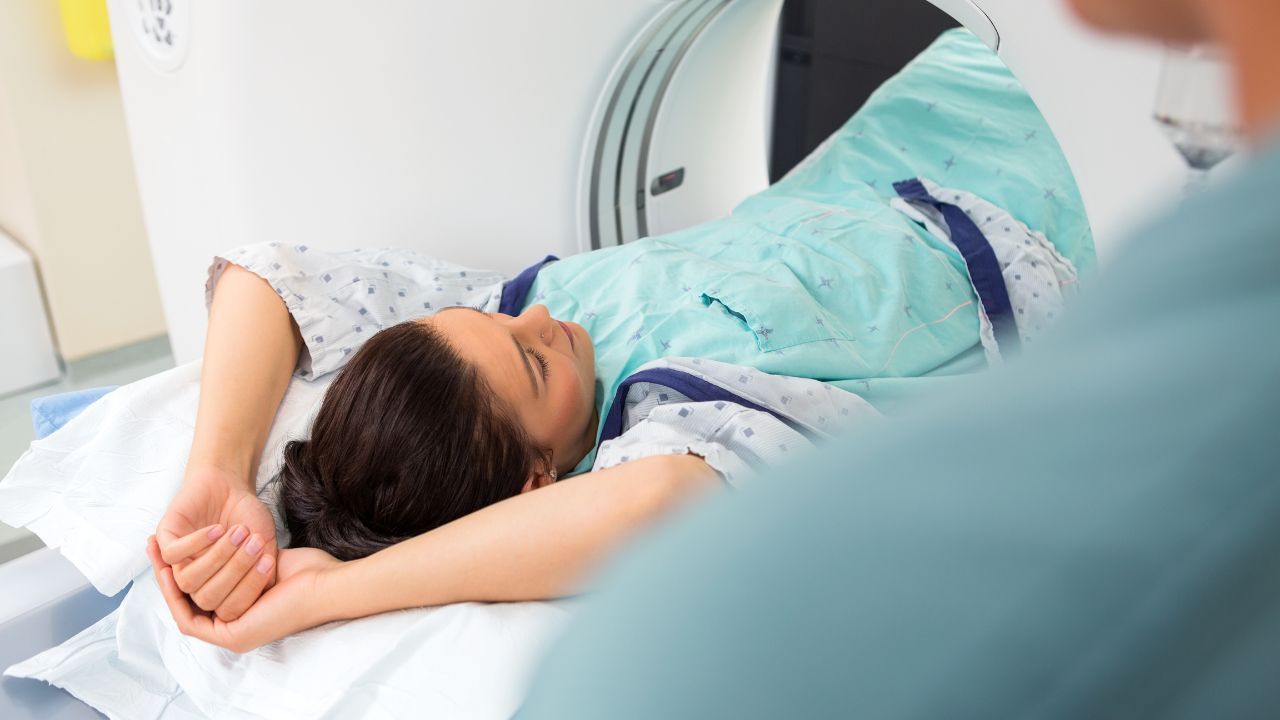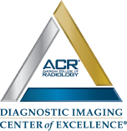
Abdominal CAT Or CT Scans
What is an abdominal CT scan?
Computed tomography, also known as a CAT or CT scan, is a diagnostic imaging technique that is noninvasive and uses a combination of computer technology and x-ray to visualize the internal organs. The images, or slices, produced are of the axial or horizontal planes of the body. The images produced by a CT scan can include blood vessels, bones, organs, fat, and muscles. CT is used for much more detailed images than can be achieved with x-ray and for structures that cannot be visualized via x-ray.
During a traditional x-ray, the radiation energy is directed at the body part that requires imaging. A plate is positioned under or behind the part being assessed, which is used to capture the radiation beam as it passes through the body part. Although x-ray is useful for diagnosing conditions or injuries in some body parts, such as bone, conditions affecting the internal organs and soft tissues cannot be visualized with x-ray.
During a CT scan, the small amount of radioactive energy moves around the body in a circular pattern. This creates images of the organs from multiple angles. The resulting data is interpreted by a computer and creates a two dimensional form, which is presented on the computer monitor.
CT scans are performed with or without a contrast agent. A contrast is a substance that is either consumed by mouth or administered intravenously, which enhances the visualization of the organs being observed under CT. Depending on the reason for a CT scan or the exact organs being scanned, you may need to fast before the imaging process. If this is necessary, your doctor will give you specific pre-test instructions.
Abdominal CT scans are more informative than x-rays of the abdomen. They are frequently used to help diagnose conditions of the abdominal organs or determine the extent of injuries.
CT scans are also used during other procedures to help determine the placement of instruments, such as needles, during the course of biopsies or to remove (aspirate) fluid from the abdomen. Abdominal CT is also used to monitor various conditions, such as tumors, before, during, and after treatments.
Abdominal conditions can be diagnosed using various diagnostic imaging procedures. These can include standard x-ray, endoscopy, abdominal ultrasound, colonoscopy, abdominal angiogram, and CT scans of the kidney, liver, pancreas, and/or gallbladder.
Why are abdominal CT scans used?
There are numerous organs located within the abdomen and abdominopelvic region. These organs are components of the endocrine, gastrointestinal, urinary, and reproductive systems. When an abdominal CT scan is performed, it may be used to identify lesions, tumors, intra-abdominal bleeding, injuries, obstructions, infections, unexplained pain, or other problems, especially when other diagnostic imaging tests or physical examinations are inconclusive.
If an abdominal tumor is present, an abdominal CT may be used to help monitor the effectiveness of treatments. Abdominal CTs are also used to aid in guiding the needle during fluid aspiration or biopsies of abdominal organs.
Your doctor may recommend an abdominal CT for other reasons.
Are there risks associated with an abdominal CT scan?
You should discuss with your doctor any concerns you have about the use of radiation to perform a CT and how it affects your specific situation. You should consider keeping thorough records of any history of radiation exposure, such as other x-rays and CT scans, so you can discuss your past history of radiation exposure with your doctor. Any risks associated with radiation exposure from CT and x-ray are cumulative, meaning the risk increases with multiple exposures to diagnostic imaging radiation over time.
You should inform your health care professional if you are currently pregnant or believe you might be pregnant. Exposure to radiation during pregnancy is associated with birth defects.
When contrast is used during a CT, there is the risk of having an allergic reaction. If you are allergic or have sensitivities to any medications, you should always notify your physician. Inform them if you have any past or current kidney problems and any previous history of reactions to contrast agents. Having a seafood allergy is not contraindicated with iodinated contrasts. If you currently take metformin (Glucophage), or similar medications, you may need to stop your medications at least 48 hours before you are administered contrast. When contrast is combined with these medications, it may cause a dangerous change in blood pH, called metabolic acidosis.
Patients with a history of kidney failure or renal disease should inform their doctor immediately. Contrast agents may contribute to kidney failure in some people, particularly if they are experiencing dehydration or have a history of renal disease.
Depending on your specific medical needs or underlying conditions, there are other risks that need to be discussed with your doctor. Always discuss your concerns with your medical team before agreeing to have the procedure.
Some medical conditions or factors may impede the accuracy of an abdominal CT, such as:
- The presence of metal objects inside the abdomen, such as rods, pins, or surgical clips.
- Any residual barium from a recent barium enema.
- Gas and/or stool within the bowel.
- A complete hip replacement.
Preparation for a CT scan
Patients who are yet to undergo a computed tomography angiography (CTA) scan are given a basic set of instructions when they make the appointment.
Precautions
Should you be pregnant or suspect that you might be pregnant, please consult your doctor before you schedule your scan. Other options available for you will be discussed between you and your doctor.
Clothing
For clothing, keep in mind that you might be asked to change into an official patient gown. If this is the case, a gown will be provided to you. In addition, a locker will be assigned to ensure that your personal belongings are secured. Be sure to remove any form of piercings and leave all your valuables and jewelry at home.
Contrast Media
Most CT scans are usually done without a contrast media. The role of a contrast media is to improve the ability of the radiologist to view the images of the internal organs of the body.
Allergies
Make sure you inform the access center representatives if you have previously had any allergic reactions to contrast media, when you schedule the CT scan. Contrast IV will may not be administered to you if you have had an anaphylactic reaction in the past to any contrast media. If your allergy was mild and moderate during the previous use of contrast, then some medication will be administered prior to the chest CT scan. All of these plans will have to be discussed to you in detail in your appointment with our doctors for the exam. However, any known reactions to contrast media must be reported and discussed with your personal physician.
Food
You can eat and drink normally and even take your prescribed medications if your doctor decided to go with a CT scan without contrast. However, if your doctor ordered a CT scan with contrast, you will be told of restrictions prior to CT scan. Only clear liquids should be taken, and you may still take your prescribed medicine prior to the scan.
Diabetics
If you are a diabetic, you should eat a light meal three hours prior to the exam’s scheduled time. You might be asked to pause the use of medication for 48 hours after the scan, depending on the type of medication you use. You will be given detailed information on how to go about this, following your exam.
Medications
All patients may take the various forms of prescribed medicine as usual.
Don’t forget that based on your medical condition, the doctor might request a more specific preparation, which will be availed to you in detail.
CT scan Details: Procedure
CT scans can be performed on an outpatient basis and even as part of your stay in the hospital’s premises. The procedure will vary depending on the condition as well as the preferential aspects of your physician.
You might be asked to change into the patients’ gown, and this will be offered to you. In addition, a secure locker will be assigned to you where you can keep all of your personal items. Again, be sure to remove any forms of piercings and leave any valuables such as jewelry at home.
If your procedure involves the use of contrast, an intravenous (IV) line I started in the arm or hand for injection of the media. For the orally administered contrast, you will essentially be given a specially prepared liquid contrast preparation that you need to swallow. In some cases, the contrast can be given rectally.
Next, you will lie on the scan table, which slides into the large circular opening of the CT scanning machine. For comfort and preventing movement during the procedure, pillows and straps might be used. A technologist will be in the other room where the controls for the scanner are located. Nonetheless, you will be in a constant sight of the technologist via a window. You can communicate with the technologist via the speakers located inside the scanner. You also have a call button at your comfort to let them know if you are experiencing any problems as the procedure occurs. The technologist should be in constant communication with you, as they watch you every step of the procedure.
While the scanner starts to rotate around you, x-ray beams will be passing through the body for some amount of time. There are clicking sounds, which are very normal. The rays absorbed by your body tissue can be detected by the machine, and will be transmitted to the computer. This data will be translated into an image, and the radiologist can interpret it. More importantly, be sure to remain still throughout the procedure. You may also be asked to hold your breath several times during the procedure.
Contrast media may make you feel some effects when it is injected into the (IV) line. Such effects include a salty and metallic taste in your mouth, a flushing sensation, nausea or even vomiting, and a brief headache. The effects usually last for a short amount of time. Alert the technologist should you feel any form of breathing difficulties, numbness, sweating, or heart palpitations during the procedure.
Although the CT scan is not painful, the need to lie still for the entire procedure can be uncomfortable and even cause some pain, especially if you previously had an invasive procedure such as surgery or even an injury. In this case, the technologist will use all comfort measures possible and complete the procedure as quick as possible to minimize pain or discomfort.

